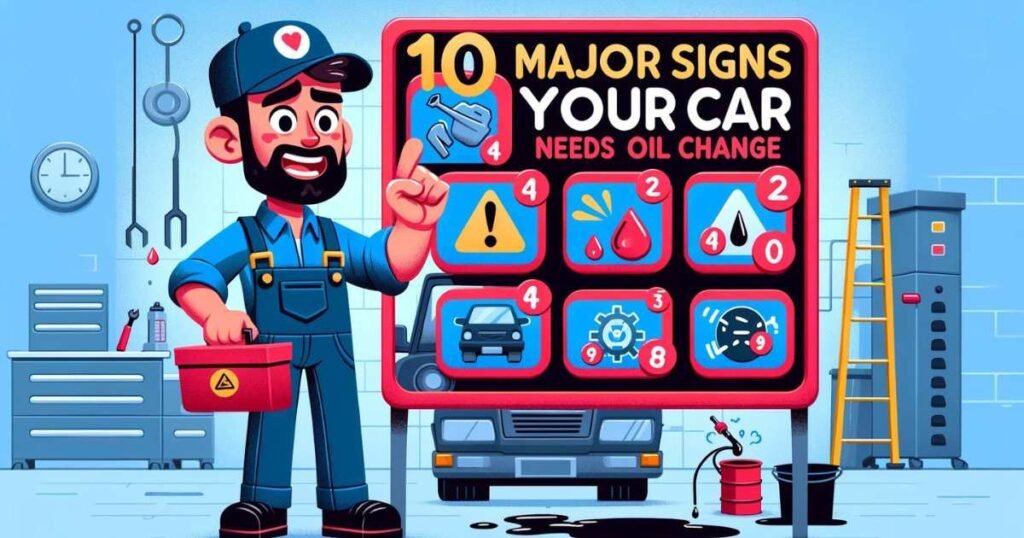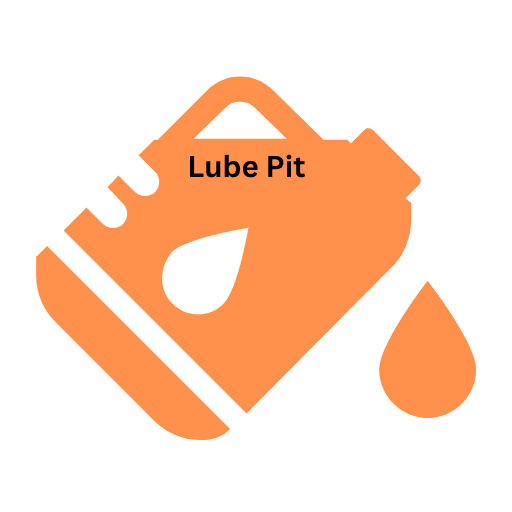To make sure your car works well for a long time, it’s very important to keep the engine oiled. Think of oil changes like giving your car a fresh drink of water. They remove old, dirty oil and put in new, clean oil. This helps your car run smoothly and stops big problems from happening later. But when should you change the oil?
Ignoring these signs and running on dirty oil can have serious consequences. Contaminated oil loses its lubricating properties, increasing friction and wear on engine components. This can result in reduced performance, decreased fuel efficiency, and even engine failure.
This guide will help you understand everything you need to know to make good choices about oil changes for your car.
Table of Contents
Why is Regular Oil change meaningful?
Engine oil is very important for your car’s engine. It’s like a special liquid that helps everything inside the engine move smoothly. It keeps the parts from rubbing against each other too much, which can cause damage.
Engine oil also helps to keep the engine from getting too hot. But after a while, this oil gets old and dirty. When that happens, it can’t protect the engine as well.
This means the engine might get damaged more efficiently, and fixing it can be expensive. So, changing the engine oil regularly is important to keep your car running well.

10 Major Signs: How Do I Know If I Need an Oil Change?
So, how can you stay ahead of the game and identify the telltale signs of an overdue oil change? Here are ten key indicators to watch out for:
1. Check Engine or Oil Change Light
Your car’s built-in warning system is the most obvious clue. If the oil change light illuminates, the oil level is usually low. However, an illuminated check engine light signals a more serious issue, potentially linked to lubrication problems. Don’t ignore these warnings!
2. Engine Noise and Knocking
Healthy oil creates a protective layer, preventing metal-on-metal contact and keeping the engine quiet. Unusual noises like knocking or rumbling could indicate insufficient lubrication, leading to engine damage.
3. Dark, Dirty Oil
Fresh oil is amber-colored and translucent. As it circulates, it collects impurities and darkens. Regularly check your oil (at least monthly) using the dipstick. If the oil on the dipstick appears dark and opaque, it’s time for a change.
4. Oil Smell Inside the Car
An oil smell in the cabin can signify a leak. If accompanied by the smell of gas or exhaust fumes, it could indicate overheating. In either case, schedule immediate service to address the underlying issue.
5. Exhaust Smoke
While some vapor from the tailpipe is normal, thick smoke signals trouble. This could be due to faulty engine parts or an oil leak. Don’t delay an engine checkup to diagnose the cause.
6. Excessive Mileage
Even if you have not noticed other signs, exceeding your car’s recommended oil change interval can be detrimental. Mileage recommendations vary depending on vehicle age, oil type, and driving conditions. Consult your owner’s manual for specific guidelines. Most cars require oil changes between 3,000 and 6,000 miles every 3-6 months. Consider high-mileage oil for older vehicles.
7. Low Oil Level
Ignoring low oil levels is a recipe for disaster. Regularly check your oil level using the dipstick and ensure it falls within the recommended range. If it’s close to the minimum mark or below, top it up and schedule an appointment for a full oil change to identify any underlying leaks.
8. Abnormal Vibrations
Feeling unusual shaking or vibrations while idling or driving? This could be a sign of several things, but dirty oil that is not lubricating properly is a potential culprit. An oil change might solve the problem, but it’s best to consult a mechanic for a diagnosis.
9. Gear Shift Issues
Worn-out oil in your transmission could be the culprit if your gears are slipping or hesitating when changing. While an oil change might not be the answer in every case, it’s worth getting your car checked to rule it out.
10. Reduced Performance
Notice a dip in your car’s acceleration or fuel efficiency? Dirty oil can increase friction within the engine, leading to decreased performance. An oil change can help restore your car’s lost pep and improve fuel economy.

What do You need to Know regarding oil change?
Oil Type: Consult your owner’s manual for the recommended oil type (synthetic, conventional, etc.) and viscosity (e.g., 5W-30).
Filter Replacement: Always replace the oil filter with the oil change. It traps contaminants that the oil removes from the engine.
DIY vs. Professional: Changing your oil yourself can save money, but it requires knowledge, tools, and proper disposal of used oil. For convenience and expertise, professional service stations are a popular choice.
Does Your Car Manual Specify a Viscosity Grade?
The manual’s recommended viscosity (e.g., 5W-30) ensures optimal flow in your climate. Thinner oils (0W-20) suit cold winters, while thicker grades (10W-40) handle extreme heat. Using the wrong grade can void warranties—ask RAM truck owners who tried 10W-40 in a 5.7L Hemi.
Are Synthetic Blends Better for High-Mileage Engines?
Synthetic blends (like Valvoline High Mileage) include conditioners that rejuvenate aging seals and reduce leaks. They’re ideal for cars with 75,000+ miles. However, full synthetic is better for engines with turbochargers or direct injection.
What Brands Do Mechanics Trust?
Mechanics favor brands meeting API (American Petroleum Institute) standards. Pennzoil Platinum, Mobil 1, and Amsoil dominate professional polls for their anti-wear additives and thermal stability.
Is Your Dashboard Warning Light Blinking?
Your car’s oil change warning light is its SOS signal. Modern vehicles use oil-life monitoring systems that track driving habits, engine temperature, and mileage to determine when oil degrades. If the light glows amber or red, don’t ignore it—your engine’s health is at risk. Some systems even display a percentage (e.g., “15% Oil Life Remaining”), giving you a heads-up before trouble starts.
Does Your Engine Sound Louder or Make Unusual Noises?
Oil isn’t just lubrication; it’s a noise dampener. When oil breaks down, metal components grind against each other, creating knocking, ticking, or roaring sounds. For example, hydraulic lifters in overhead-cam engines rely on oil pressure to function smoothly. Low or dirty oil can cause them to clatter, a classic sign your engine is begging for fresh oil.
Is Your Oil Dark, Gritty, or Smelly?
Fresh oil is amber and translucent. Over time, heat and contaminants turn it into a thick, sludge-like substance. Pull the dipstick (more on that later)—if the oil is black, feels gritty between your fingers, or smells burnt, it’s lost its ability to protect your engine. Diesel engines, in particular, darken oil faster due to soot buildup.
Does the “3,000-Mile Rule” Still Apply?
The 3,000-mile rule is outdated for most modern cars. Advances in engine design and synthetic oils allow intervals of 5,000–10,000 miles. For example, Toyota recommends 10,000-mile intervals for its 2023 models using synthetic oil. However, always check your owner’s manual—some turbocharged engines (like Ford’s EcoBoost) still need changes every 5,000 miles.
Are You Driving in Extreme Conditions?
Short trips, towing, or extreme heat/cold qualify as “severe driving” and shorten oil life. For instance, frequent cold starts prevent oil from reaching optimal temperature, causing fuel dilution (gas mixing with oil). If you’re a city driver or live in Arizona’s 115°F summers, reduce your interval by 20–30%.
Does Your Car Use Conventional or Synthetic Oil?
Synthetic oil resists breakdown better than conventional oil. Brands like Mobil 1 and Castrol Edge can last up to 15,000 miles in ideal conditions. However, hybrids with gasoline engines that cycle on/off (e.g., Toyota Prius) may still require 5,000-mile changes due to irregular usage.
Sludge—a mix of oxidized oil and debris—clogs oil passages and starves components like bearings and camshafts of lubrication. BMW’s N63 twin-turbo V8, for instance, is prone to sludge-related failures if oil changes are delayed.
Will Poor Oil Quality Hurt Fuel Efficiency?
Thick, degraded oil forces your engine to work harder. According to a 2022 AAA study, neglected oil can reduce fuel efficiency by up to 2%. For a truck averaging 15 MPG, that’s an extra $100/year in gas.
Are You Voiding Your Warranty by Waiting Too Long?
Most warranties require proof of regular oil changes. Hyundai’s 10-year/100,000-mile warranty, for example, demands receipts showing adherence to factory intervals. Miss a change, and you might pay out-of-pocket for a blown engine.
What are the most popular options to get an oil change?
Quick Lube: These offer fast, convenient service but might use generic oil and filters. Compare prices and services before choosing.
Dealership: They use genuine parts and oil specific to your car but often have higher prices.
Independent Mechanic: A trusted mechanic can offer competitive rates and personalized service.
How long should I wait while getting an oil change service?
A basic oil change usually takes 30-60 minutes at a service station and might be longer at a dealership. DIY can take longer, depending on your experience and skills.
Is it possible to do an oil change myself, and what should I know if I want to DIY?
Changing your oil at home can be rewarding and save money if you’re up to the challenge. However, it’s crucial to understand the risks, what it entails, and what tools you need before you get started.
What tools and supplies will I need to change my oil at home?
You’ll need:
- A wrench or socket set to remove the oil drain plug
- A new oil filter and the correct socket to remove the old one
- An oil filter wrench
- A drain pan to catch the old oil
- A funnel
- The correct type and amount of new oil
- A rag or paper towels
- Optional: Ramps or a jack and jack stands for extra space
How can I safely dispose of used motor oil?
Used motor oil should not be disposed of with regular trash or poured into the drain. Many auto parts stores and recycling centers will accept used oil for free or for a small fee. Researching these local options is key to disposing of it responsibly.
What are the steps involved in properly changing my vehicle’s oil?
Here are the general steps:
- Warm up your engine
- Safely lift the car with ramps or a jack and jack stands.
- Place the drain pan underneath the oil drain plug
- Remove the drain plug and let the old oil drain completely.
- Remove the old oil filter and install the new one, using a bit of oil to lubricate the gasket.
- Reinstall the oil drain plug with a new washer.
- Lower the car and add the required amount of new oil.
- Start the engine and let it run for a minute, then check for leaks and check the oil level again.
What are some important safety precautions to take when working under my car?
Always use jack stands for safety; never rely solely on a jack to keep your car up. Wear protective gloves and eye protection, and use a drip pan to catch the old oil. Be careful of hot engine parts and always clean any spills that may occur to avoid falls.
Final Thoughts
Here is the final verdict about the top 10 major signs that help you understand when you need an oil change. Regular oil changes are an essential part of car maintenance. By being aware of the signs of an overdue oil change and taking action when necessary, you can help keep your car running smoothly and prevent costly repairs.
FAQs
Can I change my oil myself?
Yes, you can change your oil yourself, but knowing what you’re doing is important. If you need more time to do it yourself, take your car to a qualified mechanic.
What happens if I wait to change my oil regularly?
Dirty oil can lead to increased engine wear and tear, reduced fuel efficiency, and even engine failure.
How long can I go without an oil change?
It’s recommended to stay within the manufacturer’s recommended mileage interval for oil changes. Pushing it beyond can lead to engine wear and tear, reduced performance, and potential damage.
While some sources online mention extending intervals with synthetic oil, always prioritize your car’s specific manual recommendations for optimal safety and longevity.
What are the signs of low engine oil?
Oil Change Light: This light turns on if the oil level is low or the oil pressure is insufficient.
Engine Noises: Knocking, tapping, or grinding noises can indicate low oil levels and insufficient lubrication.
Oil Pressure Gauge: If equipped, a low reading on the oil pressure gauge can signal low oil.
Engine Overheating: Low oil levels can lead to overheating due to inadequate lubrication.
Check Engine Light: In some cases, the check engine light may illuminate in conjunction with other low oil level symptoms.
Can you feel when your car needs an oil change?
In most cases, no, you cannot physically feel when your car needs an oil change. However, you might notice performance changes like reduced acceleration, rough idling, or increased vibration, which could be indirectly related to dirty oil. It’s best to rely on the earlier signs and stick to the recommended oil change intervals to avoid potential problems.
How do you know when you need an oil change?
There are several ways to know when it’s time for an oil change:
- Mileage: This is the most common indicator. Refer to your car’s owner’s manual for the recommended interval, typically between 3,000 and 10,000 miles. However, severe driving conditions like short trips, stop-and-go traffic, or extreme temperatures might warrant more frequent changes.
- Oil Condition: Check your oil dipstick regularly. Clean oil is amber-colored and translucent. If it’s dark, dirty, or gritty, it’s time for a change.
- Engine Noises: Unusual ticking, knocking, or grinding noises from the engine can signify insufficient lubrication due to dirty oil.
- Oil Change Light: Most modern cars have an oil change light that illuminates when the car’s computer detects the need for an oil change. Don’t ignore this warning!
- Performance Issues: Decreased fuel efficiency, sluggish acceleration, or rough idling can sometimes be linked to dirty oil.

